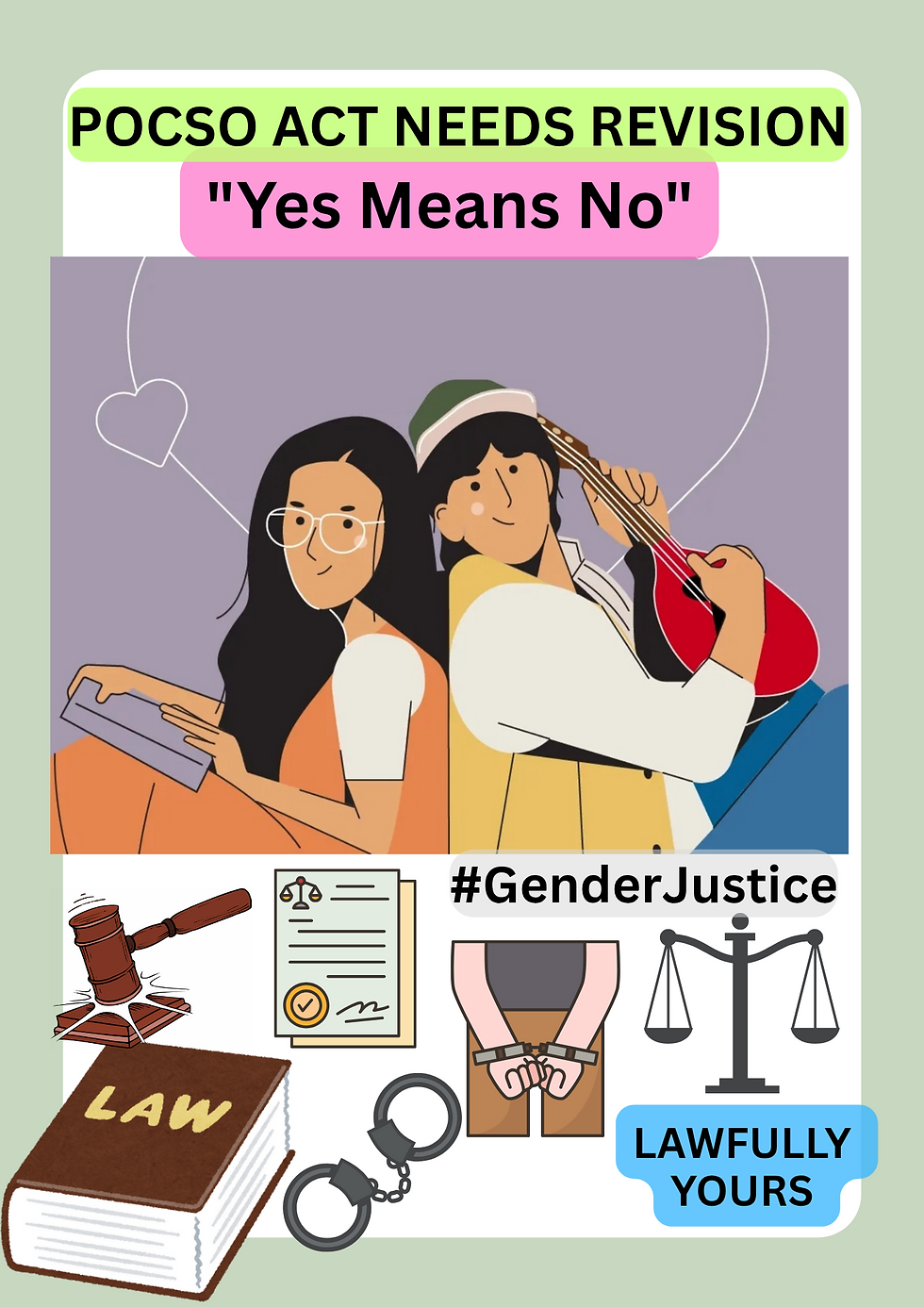🔑197 CrPC REQUIREMENTS IN PMLA CASES
- Subhodeep Chattopadhyay
- Jul 30
- 8 min read
Updated: Aug 1

⚖️ Supreme Court's Bibhu Prasad Acharya Judgment: A Critical Analysis of Section 197 CrPC Sanction Requirements in PMLA Cases 🏛️
📅 Published: July 29, 2025 | 🔍 Legal Analysis | 💼 Criminal Law
🌟 Introduction: The Eternal Quest for Justice
The Latin maxim "Fīat iūstitia ruat cælum" - "Let justice be done though the heavens fall" - has long served as the cornerstone of legal systems worldwide. This principle embodies the fundamental truth that justice must prevail regardless of the consequences, and that all individuals, irrespective of their position or power, are equal before the law. ⚖️
However, the recent Supreme Court judgment in Directorate of Enforcement v. Bibhu Prasad Acharya has sparked intense debate within legal circles, raising critical questions about the intersection of procedural safeguards and substantive justice in money laundering cases. This landmark decision has significant implications for how India's premier anti-money laundering agency, the Enforcement Directorate (ED), conducts its investigations and prosecutions. 🔍
📚 Understanding the Legal Framework: Section 197 CrPC and Its Modern Avatar
🏛️ The Historical Context
The Code of Criminal Procedure (CrPC), 1973, introduced several procedural safeguards to protect public servants from frivolous and vexatious prosecutions. These protections were deemed necessary to ensure that civil servants could discharge their official duties without fear of harassment through false or malicious legal proceedings. 🛡️
Section 197 of CrPC (now Section 218 of the Bhartiya Nagarik Suraksha Sanhita (BNSS), 2023) stands as one of the most significant procedural barriers in prosecuting public servants. This provision mandates that no court shall take cognizance of any offense alleged to have been committed by a public servant while acting or purporting to act in the discharge of official duties, unless the appropriate government has accorded prior sanction for such prosecution. 📜
🔑 Key Requirements for Section 197 Protection
For a public servant to claim protection under Section 197 CrPC, two fundamental conditions must be satisfied:
🚫 Removal Restriction: The accused public servant cannot be removed from office without the previous sanction of the appropriate government
💼 Official Duty Connection: The alleged offense must have been committed in the discharge of official duties
These requirements serve as gatekeepers, ensuring that only those public servants who genuinely require protection receive it, while preventing abuse of this procedural safeguard. ⚖️
🏛️ The Bibhu Prasad Acharya Case: Facts and Supreme Court's Ruling
📋 Case Background
The case involved a former Indian Administrative Service (IAS) officer who faced prosecution under the Prevention of Money Laundering Act (PMLA) for allegedly facilitating the creation of proceeds of crime through improper allotment of government land. The Enforcement Directorate had initiated proceedings without obtaining the mandatory sanction under Section 197 of CrPC. 🏗️
⚖️ Supreme Court's Decision
The Supreme Court, in a significant ruling, upheld the quashing of the money laundering case against the former IAS officer. The Court's reasoning was anchored on the following key principles:
🔒 Procedural Propriety: The Court emphasized that prosecuting public servants without the required sanction violates fundamental procedural propriety
🛡️ Protection Principle: Sanction under Section 197 CrPC is necessary in PMLA cases involving public servants when the alleged offense is connected to their official duties
⚖️ Jurisdictional Requirement: The PMLA, despite being a special statute, must comply with the procedural requirements of CrPC by virtue of Section 65 of PMLA
📊 Legal Implications
The judgment has far-reaching implications for anti-money laundering enforcement in India:
🚧 Procedural Hurdles: ED must now obtain prior sanction before prosecuting public servants in PMLA cases
⏱️ Delayed Prosecutions: The sanction requirement may lead to significant delays in money laundering prosecutions
🎯 Strategic Impact: Defense lawyers now have a powerful tool to challenge PMLA prosecutions involving public servants
🤔 Critical Analysis: The Unanswered Questions
🔍 The Predicate Offense Dilemma
One of the most significant concerns arising from the Bibhu Prasad Acharya judgment relates to the dual sanction requirement. The Court's decision creates a scenario where:
🎭 Double Jeopardy: Both the investigating agency handling the predicate offense and the ED must obtain separate sanctions from the same authority
⚡ Duplication of Efforts: This results in unnecessary bureaucratic duplication and potential delays in justice delivery
🔗 Inextricable Link: Given the inherent connection between predicate offenses and money laundering, requiring separate sanctions appears counterproductive
💭 The Official Duty Paradox
The judgment raises fundamental questions about what constitutes "discharge of official duties" in the context of money laundering:
🚨 The Sambhoo Nath Misra Precedent
In Sambhoo Nath Misra v. State of UP, the Supreme Court clearly established that certain illegal acts cannot be considered as performed in the discharge of official duties:
"It is not the official duty of the public servant to fabricate false records and misappropriate public funds... Performance of official duty under color of public authority cannot be camouflaged to commit crime." 📝
🎯 Application to Money Laundering
When we apply this principle to money laundering cases, several critical questions emerge:
❓ Can money laundering activities ever be considered part of official duties?
🤷♂️ How can the "process or activity" of money laundering be undertaken in discharge of official duties?
🔍 Does the mere fact that official position facilitated the crime make it an official act?
📈 The Legislative Intent Behind PMLA
The Prevention of Money Laundering Act was enacted with specific objectives:
🎯 Combat Financial Crimes: To prevent money laundering and provide for confiscation of property derived from money laundering
🌐 International Compliance: To align India with international standards for combating money laundering
⚡ Effective Enforcement: To create a robust framework for quick and effective action against money launderers
The Bibhu Prasad Acharya judgment, while protecting procedural rights, may inadvertently undermine these legislative objectives by creating additional procedural hurdles. 🏗️
🏛️ Comparative Analysis: Section 197 vs. PMLA Requirements
📊 Traditional Criminal Cases vs. Money Laundering Cases
Aspect | Traditional Cases | PMLA Cases |
🎯 Nature | Direct criminal acts | Derivative from predicate offenses |
🔗 Connection | Direct official duty link | Indirect through predicate offense |
⚖️ Agencies | Single investigating agency | Multiple agencies (predicate + ED) |
📋 Sanction | Single sanction requirement | Potentially dual sanction requirement |
🌍 International Perspectives
Most developed jurisdictions have streamlined procedures for money laundering prosecutions to ensure effectiveness:
🇺🇸 United States: Limited immunity protections for public officials in financial crimes
🇬🇧 United Kingdom: Emphasis on substantive justice over procedural protections in serious financial crimes
🇦🇺 Australia: Balanced approach between procedural fairness and enforcement effectiveness
💡 Practical Implications for Legal Practice
👨💼 For Defense Lawyers
The judgment provides several strategic advantages:
🛡️ New Defense Strategy: Section 197 CrPC can now be invoked as a preliminary defense in PMLA cases
⏱️ Delay Tactics: The sanction requirement can be used to delay proceedings significantly
🎯 Technical Challenges: Opportunities to challenge the adequacy and validity of sanctions obtained
🏛️ For Prosecution Agencies
The ruling creates new challenges:
📋 Additional Paperwork: Need to obtain sanctions before initiating prosecutions
⏳ Timeline Extensions: Increased time required for case preparation and filing
🎯 Strategic Planning: Need to coordinate with multiple authorities for sanction requirements
⚖️ For the Judiciary
Courts now face complex questions:
🔍 Scrutiny Standards: What level of scrutiny should be applied to sanction orders?
⚖️ Balancing Interests: How to balance procedural protections with substantive justice?
📋 Case Management: Managing the increased complexity in PMLA prosecutions
🚀 The Way Forward: Potential Solutions and Reforms
📜 Legislative Reforms
Several legislative interventions could address the concerns raised:
🔧 PMLA Amendment: Specific provisions clarifying sanction requirements in money laundering cases
⚖️ Unified Sanction Process: Single sanction covering both predicate and money laundering offenses
⏱️ Time-bound Sanctions: Mandatory timelines for sanction decisions to prevent delays
🏛️ Judicial Clarifications
Future judicial pronouncements could provide clarity on:
📏 Scope Definition: Clear parameters for when Section 197 applies in PMLA cases
🎯 Official Duty Test: Refined tests for determining official duty connection in money laundering
⚖️ Balancing Principles: Guidelines for balancing procedural protections with enforcement needs
🔧 Administrative Measures
Government agencies could implement:
📋 Standard Procedures: Streamlined processes for sanction applications
⚡ Fast-track Mechanisms: Expedited procedures for urgent cases
🤝 Inter-agency Coordination: Better coordination between different investigating agencies
🌟 Impact on Anti-Money Laundering Enforcement
📊 Statistical Implications
The judgment may lead to:
📉 Reduced Prosecutions: Potential decrease in PMLA prosecutions involving public servants
⏱️ Increased Timelines: Longer duration from investigation to trial
💰 Higher Costs: Increased administrative and legal costs for enforcement agencies
🎯 Enforcement Effectiveness
Key concerns include:
🚧 Deterrent Effect: Whether the additional procedural requirements will reduce the deterrent effect of PMLA
⚖️ Justice Delivery: Impact on timely delivery of justice in financial crimes
🌐 International Relations: Effect on India's reputation in international anti-money laundering efforts
🔮 Future Trends and Predictions
📈 Legal Developments
Expected trends include:
📚 More Litigation: Increased challenges to PMLA prosecutions on sanction grounds
🏛️ Supreme Court Review: Possibility of larger bench consideration of the issue
📜 Legislative Response: Potential parliamentary intervention to clarify the law
🌍 Policy Implications
Broader policy considerations:
⚖️ Balance Point: Finding the right balance between protection and enforcement
🎯 Effectiveness Metrics: Measuring the actual impact on anti-money laundering efforts
🔧 System Reforms: Comprehensive review of the entire framework
💼 Practical Guidance for Practitioners
📋 For Investigation Agencies
🔍 Early Assessment: Evaluate sanction requirements at the investigation stage
📝 Documentation: Maintain detailed records of official duty connections
⚡ Coordination: Establish better coordination mechanisms with sanctioning authorities
👨⚖️ For Legal Practitioners
📚 Case Law Update: Stay updated with evolving jurisprudence on Section 197
🎯 Strategic Planning: Develop strategies considering sanction requirements
🤝 Client Counseling: Advise clients on implications of the new legal position
🎯 Conclusion: Navigating the Complex Terrain
The Supreme Court's judgment in Bibhu Prasad Acharya represents a significant development in the intersection of procedural criminal law and anti-money laundering enforcement. While the decision upholds important procedural safeguards for public servants, it also raises critical questions about the effectiveness of India's anti-money laundering framework. ⚖️
The judgment's emphasis on procedural propriety is commendable and aligns with the fundamental principle of rule of law. However, the practical implications of requiring separate sanctions for predicate and money laundering offenses may create unnecessary bureaucratic hurdles that could impede effective enforcement. 🚧
Moving forward, it is essential for all stakeholders - the legislature, judiciary, and executive - to work collaboratively to address the ambiguities highlighted by this judgment. The goal must be to create a framework that adequately protects public servants from vexatious prosecutions while ensuring that the fight against money laundering remains effective and robust. 🤝
As the legal landscape continues to evolve, practitioners must remain vigilant and adaptable, ensuring that justice is not only done but is also seen to be done, in accordance with the eternal principle of "Fīat iūstitia ruat cælum." ⚖️
The ultimate test of any legal system lies not just in its ability to protect the innocent, but also in its capacity to effectively prosecute the guilty. The challenge now is to ensure that procedural protections do not become procedural impediments to justice. Only through careful calibration and continuous refinement can we achieve the delicate balance that true justice demands. 🌟
💡 About the Author: This analysis provides a comprehensive examination of the legal implications of the Supreme Court's decision in Bibhu Prasad Acharya case and its impact on anti-money laundering enforcement in India.
📚 Disclaimer: This blog post is for informational purposes only and does not constitute legal advice. Readers should consult qualified legal professionals for specific legal guidance.



Comments